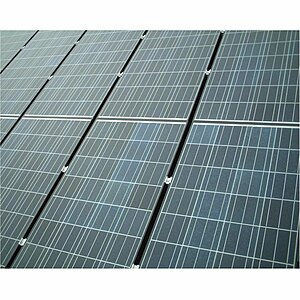The Increased Effectiveness of Solar Panels
The ever-looming idea of finite resources has led to a worldwide intellectual search for the discovery of alternative fuel sources. Some of the alternative ideas have been around for decades, but because of inadequate funding and promotion, they dwindled away while giant oil corporations expanded even further. The negative consequences that fossil fuels had on the environment and gas prices are what it took for the alternative energy enterprise to be rebooted. Solar panels have been central to alternative fuel research, and recently MIT researchers have shown that they can increase the energy potential of solar cells well beyond what was originally thought possible.
The Initial Idea Behind Solar Panels
In the past, standard photovoltaic (solar) cells worked by absorbing photons, or particles of light. Each photon would replace an electron within the element being utilized in the solar cell. Subsequently, the loose electron would then be collected with every other loose electron in a wire, whereby it can be harnessed as electricity. Surprisingly, the first photovoltaic cell was devised in 1839 by a young French physicist named A. E. Becquerel utilizing the element selenium. The cells at this time were only around 1% efficient, but as with anything in science, it takes time.
By 1954, Bell Laboratories successfully manufactured a photovoltaic cell with silicon rather than selenium. With silicon, researchers were able to raise the efficiency level of the cell to approximately 6%. As time progressed, the overall efficiency level of silicon based solar cells has been calculated to have an ultimate efficiency limit of 34%.
Current News on Solar Cell Improvements
In the past year, researchers have shown a way to possibly exceed the efficiency limit of 34% in the near future. The new technique is said to allow photons to displace 2 electrons rather than just one. This new feat was accomplished utilizing an organic cell comprised of the compound pentacene. This may lead to new innovations in the photovoltaic cell that will allow it to surpass the current average in efficiency, which is around 25 percent.
What It Took to Finance the Solar Cell
Initially, taking the option to finance solar cell production seemed impracticable. In the 1950s, for every 1 watt of electricity the solar cell could produce, it cost around $250. This was at a time when coal plants could produce the same amount of electricity for $2 to $3. By the 1970s, the cost of producing one watt of electricity drastically decreased to $100. This was still not a viable option in comparison to the price of coal at the time, but progress was still being made.
One company did choose to finance research into photovoltaic cells in the late ’60s. The giant gas mogul, Exxon, decided to look towards the future of alternative fuel sources. They did this by investing in a brilliant scientist by the name of Elliot Berman. At the time, Berman was researching a novel method for creating silicon fuel cells using a ribbon process. Because Berman realized that it would take years of development to perfect the ribbon process, he started by revamping the already existent solar cell. Berman saw that he could use cast-off materials from the electronics market to manufacture low-cost cells. By 1973, Berman was able to reduce the cost of production to $10 per watt of electricity.
Since Berman’s ingenious innovations, scientists have been able to lower the cost of production down to a measly $1 per watt. Last year, prices fell to exactly $0.62 per watt and prices are expected to continue falling in the years to come. Currently, there are federal incentives for installing solar energy systems to your home. The government will provide tax credits for anyone installing solar-electric or solar water heating systems to their residence. The 2012 and 2013 federal tax credit includes a credit of 30% on the price of the system. This offer is set to expire in 2016.
Author Bio
William Stevens is a writer who creates informative articles in relation to technology. In this article, he describes the finances surrounding solar panels and aims to encourage further study with an Ohio University Online Electrical Engineering Masters.

Category: Business







